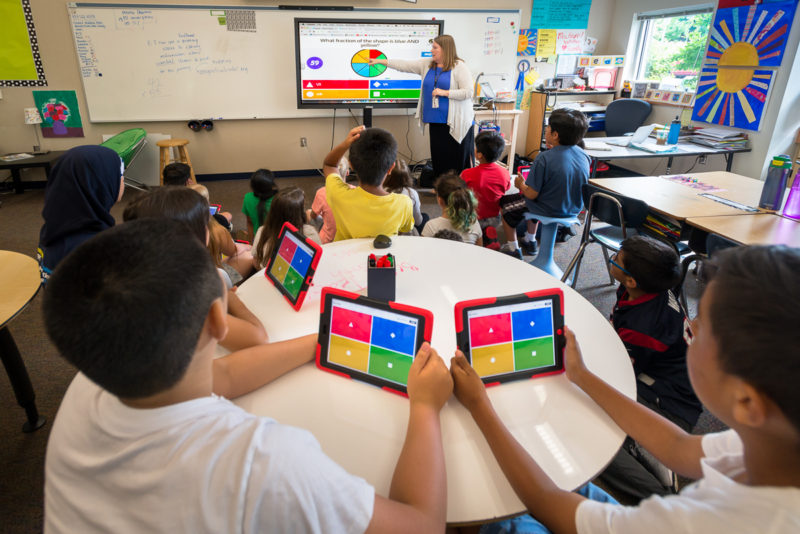When they develop goals using the principles of UDL, what is
the main thing that teachers need to keep in mind?
When developing goals for students in a classroom it is
important to keep certain aspects of the student progress in mind. As a teacher
we need to ask ourselves if the instruction is adequate for the students, and
is the instruction meaningful, motivating and engaging for our students. A UDL
(Universal Design for Learning) is the best route to take to ensure a wide
range of students will be successful. The three basic principles of UDL are
representation, action and expression and engagement.
Representation- presenting information of all course content
in multiple formats and easy access
Action and Expression- allow students alternatives to
express or demonstrate their learning

Engagement - stimulating students’ interest and motivation
to learn in a variety of ways

If teachers keep this system within their teaching styles
and lesson plans all students can succeed to new heights.
Imagine that you are a second-grade teacher beginning a unit
on plants. You wish to make certain that you address the three principles of
UDL. Describe the instructional methods you would use to present the
information, assess your students, and maintain their engagement in the
subject.
To ensure all three principles are met I would divide my
instruction into each principle, so I know it is being met.
Representation-
I would write a lesson plan ensuring all aspects of the
lesson will be met.
First introduce a question to see what the students already
know about the subject on their own.
I would add in a chart that will be completed by the end of
the day, week, month however long the lesson may go, of what the students know,
what they have learned, and what they will take away from the lesson so the
students can see their progress along the way of the lesson which also allows me
as a teacher to asses the progress made.
Then I will begin to introduce the lesson of what are plants,
why are they important, where can we find them, when do we see them, who is
involved in them as a career choice and how they impact everyday life. I will
ensure if I have students with an IEP (individualized education plan) their
style of the work is met and guarantee that students can access the information
in different ways besides one lesson of lecture or activity.
Action and Expression-
I would allow students to do an activity where they are
learning off each other but also expressing their own work on the subject.
Weather it be a group interactive activity or self-work of drawing or take-home
project. Something where they can show me that they are understanding the
information correctly and still creating something on their own. For students
who need extra help or guidance I will recommend extra alternatives and help to
meet their needs as a student and ensure their success.
Engagement-
Making any lesson interesting is hard on a teacher because
every student is different. Throughout my lesson I will include videos and
pictures and extra activities to keep students attention and my final act of
the lesson with engagement would be an in class project as a whole class of
seeing different plants growing in different parts of the classroom. With a
mini field trip outside to see plants in action.
I have finish off the lesson, I have assessed my students
work to ensure retention of the information was met and made accommodations to
those students who needed it. I have implanted each aspect of UDL in my lesson
and my students successfully completed the lesson on plants.
I got most of my information from http://iris.peabody.vanderbilt.edu/module/udl/
